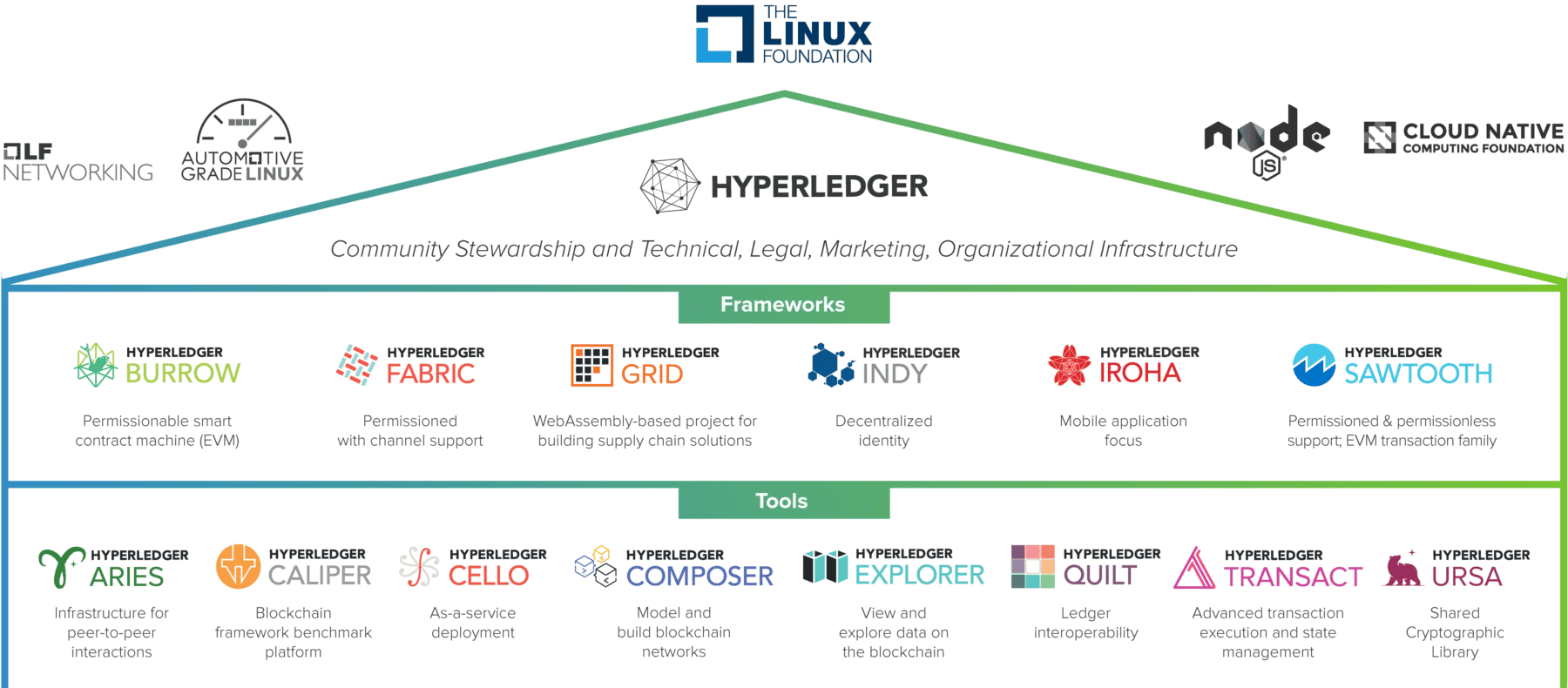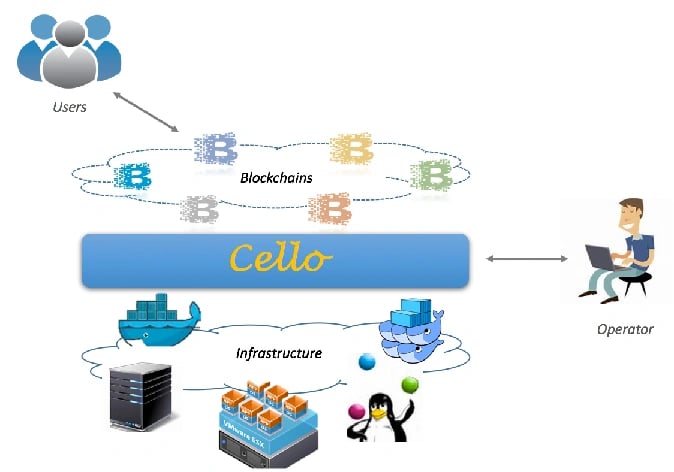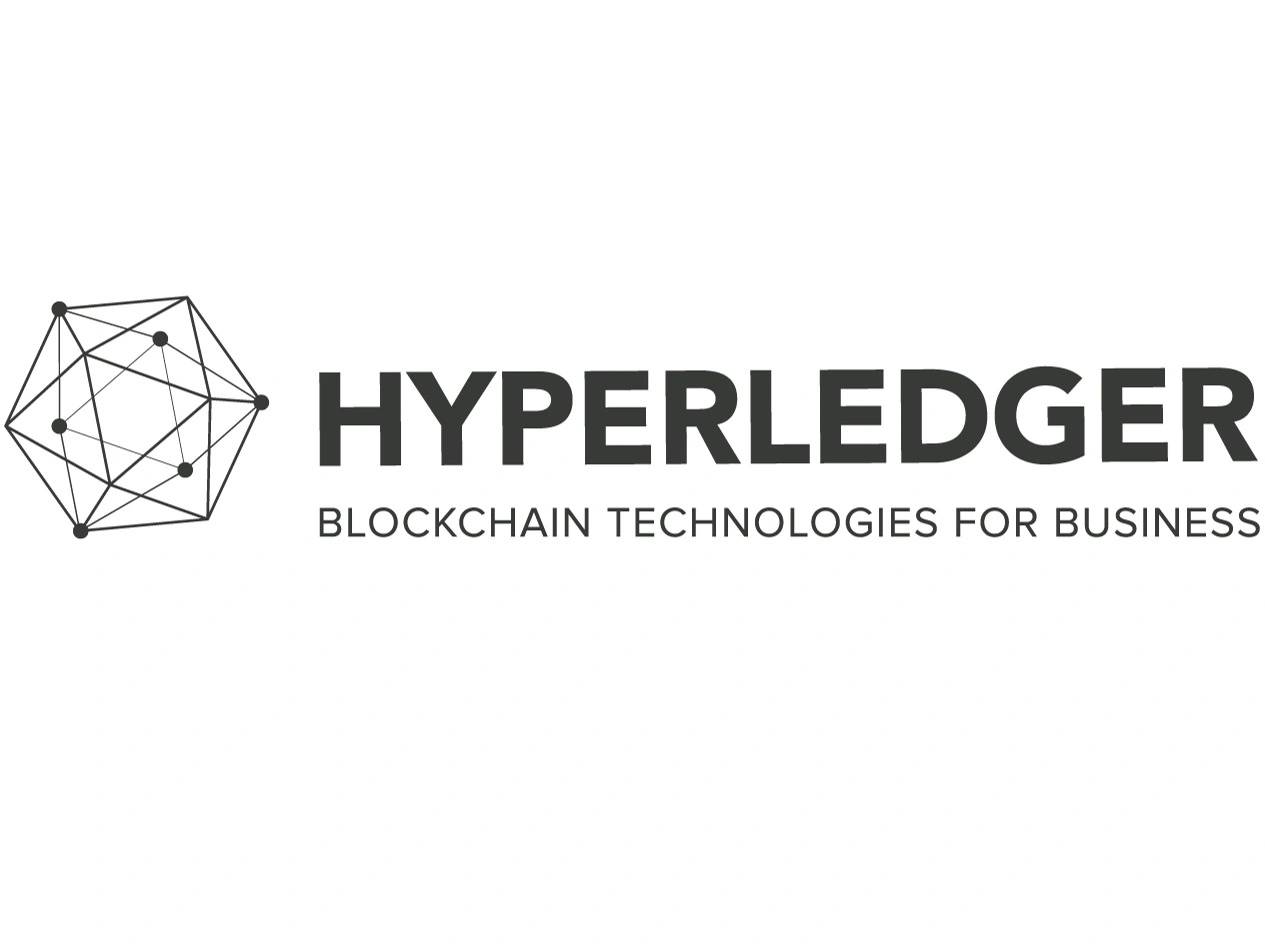위키 구독하기
Share wiki
Bookmark
Hyperledger
Hyperledger
Hyperledger(하이퍼레저)는 블록체인 기반 분산 원장의 개발을 지원하기 위해 만들어진 오픈소스 프로젝트들의 모음입니다. 블록체인 및 관련 애플리케이션을 구축하는 데 필요한 프레임워크, 표준, 도구 및 라이브러리를 만드는 것을 목표로 합니다.[1]
개요

다양한 안정적인 프레임워크, 도구 및 라이브러리를 통해 기업급 블록체인 배포를 위한 풍부한 컬렉션을 제공하며, 하이퍼레저는 블록체인 기술의 대규모 기업 도입을 추진하는 것을 목표로 합니다.
비트코인이나 이더리움과 같은 암호화폐는 허가 없는 블록체인에 의존하는 반면, 하이퍼레저 재단은 허가된 기업용 블록체인을 만드는 데 중점을 둡니다. 즉, 참여자들이 합의 규칙을 준수하는 고유한 이점을 가진 사설 네트워크에서 블록체인이 운영된다는 것을 의미합니다.
하이퍼레저 출시와 함께 리눅스 재단은 이 프로젝트에 대한 5가지 주요 목표를 설정했습니다. 가장 큰 목표 중 하나는 기업이 내부적으로 그리고 서로 소통할 수 있는 직관적인 블록체인 기반 생태계를 만드는 것입니다. 하이퍼레저 재단의 또 다른 중요한 목표는 블록체인 기술의 수많은 시장 기회를 보여주기 위해 교육 자료와 이벤트를 추진하는 것입니다. 블록체인의 고유한 특성으로 인해 하이퍼레저 재단은 기업을 위한 중립적이고 개방적이며 커뮤니티 중심의 인프라를 구축하는 것을 목표로 합니다. 마지막으로 재단은 기업 분야에서 블록체인 기술의 추가 개발을 지원하기 위해 강력한 커뮤니티 정신을 장려하고 구축하기 위해 노력하고 있습니다.
하이퍼레저 재단은 그간의 작업과 파트너십을 통해 블록체인 기술에 대한 수많은 실제 사용 사례와 애플리케이션을 성공적으로 개발했습니다. 금융 서비스에서부터 공급망 관리, 의료에 이르기까지 재단의 주요 목표 중 하나는 가능한 한 많은 산업에 블록체인 기술을 도입하는 것입니다. IBM, 월마트(Walmart), 허니웰(Honeywell), 후지쯔(Fujitsu), 인텔(Intel)과 같은 기업 파트너와 함께 하이퍼레저 재단은 세계적으로 가장 잘 알려진 블록체인 생태계 중 하나입니다. 블록체인 기술에 대한 관심이 기하급수적으로 증가함에 따라 재단은 새로운 산업과 다양한 새로운 사용 사례로 영향력을 확장하고 있습니다. [2]
역사
리눅스 재단은 출시 1년 전인 2015년에 하이퍼레저 프로젝트(Hyperledger Project)의 생성을 발표했습니다. 브라이언 베렌도르프(Brian Behlendorf)가 이사직에 임명되었습니다. 베렌도르프는 하이퍼레저 프로젝트가 자체 암호화폐를 구축하지 않을 것이라고 밝혔습니다.
2016년, 본 프로젝트는 코드베이스 및 기타 핵심 요소 기술의 인큐베이션 제안을 받기 시작했습니다. 처음 채택된 두 가지 블록체인 프레임워크 코드베이스는 하이퍼레저 패브릭(Hyperledger Fabric)과 libconsensus였습니다. 이후 인텔의 분산 원장인 쏘투스(Sawtooth)가 인큐베이션되었습니다.
2018년에는 프로덕션 준비가 완료된 쏘투스 1.0이 추가되었습니다.
2019년에는 하이퍼레저 패브릭의 장기 지원 버전이 발표되었습니다.
2021년 10월, 베렌도르프는 다니엘라 바르보사(Daniela Barbosa)에게 이사직을 넘겼습니다. 같은 달, 하이퍼레저는 하이퍼레저 재단(The Hyperledger Foundation)으로 브랜드를 변경하여 "하이퍼레저를 조직으로서 그리고 개별 하이퍼레저 프로젝트와 명확하게 구분하기 위해" 변경을 발표하는 블로그 게시물에 따르면 변경되었습니다.
주요 프레임워크
가장 주목할 만한 두 가지 하이퍼레저 프레임워크로는 하이퍼레저 패브릭(Hyperledger Fabric)과 솔투스(Sawtooth)가 있습니다.
Hyperledger Fabric
하이퍼레저 프로젝트 중 가장 인기 있는 프로젝트 중 하나입니다. 기업 환경에서 사용하도록 설계된 오픈소스 엔터프라이즈급 권한 부여 분산 원장 기술(DLT) 플랫폼으로, 다른 인기 있는 분산 원장 또는 블록체인 플랫폼에 비해 몇 가지 주요 차별화 기능을 제공합니다. IBM과 Digital Asset과의 협력으로 만들어졌습니다. 노드 간 역할, 스마트 계약 실행 및 구성 가능한 합의 서비스를 정의하는 모듈식 아키텍처를 제공합니다. 패브릭의 기능에는 스마트 계약 사용과 플러그 가능한 하이퍼레저 패브릭 합의 프로토콜이 포함됩니다. 또한 모듈 설치를 통해 다양한 프로그래밍 언어를 지원합니다. 하이퍼레저 패브릭은 분산 원장이 필요한 통합 프로젝트에 사용됩니다.
패브릭은 매우 모듈식이고 구성 가능한 아키텍처를 가지고 있어 금융, 보험, 의료, 인적 자원, 공급망, 디지털 음악 배포 등 광범위한 산업 용례에 대한 혁신, 다양성 및 최적화를 가능하게 합니다.
패브릭은 Java, Go, Node.js와 같은 범용 프로그래밍 언어로 작성된 스마트 계약을 지원하는 최초의 분산 원장 플랫폼입니다. 제한적인 도메인 특정 언어(DSL) 대신 말이죠. 즉, 대부분의 기업은 이미 스마트 계약 개발에 필요한 기술을 보유하고 있으므로 새로운 언어나 DSL을 배우기 위한 추가 교육이 필요하지 않습니다.
패브릭 플랫폼은 또한 권한이 부여된 플랫폼입니다. 공개적이고 권한이 없는 네트워크와 달리 참여자는 서로 알고 있으며 익명이 아니므로 완전히 신뢰할 수 없습니다. 즉, 참여자들이 서로를 완전히 신뢰하지 않을 수도 있지만(예를 들어, 동일한 업계의 경쟁업체일 수 있음), 네트워크는 참여자 간에 존재하는 신뢰(예: 법적 계약 또는 분쟁 처리 프레임워크)를 기반으로 구축된 거버넌스 모델에 따라 운영될 수 있습니다.
패브릭은 비용이 많이 드는 채굴을 유도하거나 스마트 계약 실행에 연료를 공급하기 위해 기본 암호화폐가 필요 없는 합의 프로토콜을 활용할 수 있습니다. 암호화폐를 사용하지 않으면 상당한 위험/공격 벡터가 줄어들고 암호화폐 채굴 작업이 없으면 플랫폼을 다른 분산 시스템과 거의 동일한 운영 비용으로 배포할 수 있습니다.
이러한 차별화된 설계 기능의 조합은 패브릭을 거래 처리 및 거래 확인 대기 시간 측면에서 현재 사용 가능한 최고 성능 플랫폼 중 하나로 만들고, 거래 및 이를 구현하는 스마트 계약(패브릭에서는 “체인코드”라고 함)의 개인 정보 보호 및 기밀성을 가능하게 합니다.
패브릭의 차별화된 기능은 권한이 부여된 블록체인[4]을 위한 확장 가능한 시스템으로 만들어 플랫폼이 정부, 금융, 공급망 물류, 의료 등 광범위한 산업 용례를 지원할 수 있도록 유연한 신뢰 가정을 지원합니다.
하이퍼레저 패브릭은 하이퍼레저 프로젝트 중 가장 활동적인 프로젝트입니다. 플랫폼 주변에 구축되는 커뮤니티는 꾸준히 성장하고 있으며, 각 후속 릴리스에서 제공되는 혁신은 다른 모든 엔터프라이즈 블록체인 플랫폼을 훨씬 능가합니다.[3]
Hyperledger Sawtooth (하이퍼레저 소토스)
Hyperledger Sawtooth는 분산 원장 애플리케이션 및 네트워크를 구축하기 위한 엔터프라이즈 블록체인 플랫폼입니다. 설계 철학은 원장을 분산시키고 스마트 계약을 안전하게 만드는 데, 특히 기업 사용에 중점을 둡니다. 이것은 인텔이 기여한 권한이 부여된 모듈식 블록체인 플랫폼입니다.
소토스는 핵심 시스템과 애플리케이션 도메인을 분리하여 블록체인 애플리케이션 개발을 단순화합니다. 애플리케이션 개발자는 핵심 시스템의 기본 설계를 알 필요 없이 자신이 선택한 언어를 사용하여 애플리케이션에 적합한 비즈니스 규칙을 지정할 수 있습니다.
소토스는 권한이 부여된(개인) 네트워크의 과제를 해결하도록 구축되었습니다. 별도의 권한을 가진 소토스 노드 클러스터를 쉽게 배포할 수 있습니다. 트랜잭션 패턴이나 기타 기밀 정보가 유출될 수 있는 중앙 집중식 서비스는 없습니다. 블록체인은 역할 및 ID와 같은 권한을 지정하는 설정을 저장하므로 네트워크의 모든 참여자가 이 정보에 액세스할 수 있습니다.[7]
Hyperledger Sawtooth는 신뢰할 수 없는 당사자 간의 공유 상태에 대한 트랜잭션 기반 업데이트를 구현하기 위한 매우 모듈식이고 유연한 플랫폼을 제공하며, 블록체인 기술을 사용하는 데 어려움을 겪는 기업을 지원할 수 있습니다.
소토스의 기능에는 동적 합의, 트랜잭션 패밀리, 경과 시간 증명(합의 알고리즘의 한 유형), 병렬 트랜잭션 실행(개별 체인 생성 허용), 개인 트랜잭션이 포함됩니다. 또한 Ethereum 스마트 계약을 지원합니다. Python, Go, JavaScript, Rust, Java 및 C++용 소프트웨어 개발 키트(SDK)도 제공됩니다. 소토스는 권한이 부여되고 모듈식인 블록체인 플랫폼이 필요한 기업을 위해 설계되었습니다.[6]
기타 하이퍼레저 도구 및 프로젝트
하이퍼레저 패브릭(Hyperledger Fabric)과 소토(Sawtooth)는 하이퍼레저가 보유한 유일한 두 프로젝트가 아닙니다. 하이퍼레저는 현재 활성화되어 있거나 인큐베이션 중인 여러 프로젝트와 도구를 제공합니다. 즉, 활성화되고 프로덕션 준비가 되려면 특정 탈퇴 기준을 충족해야 합니다. 이러한 프로젝트 중 일부는 다음과 같습니다.
- 하이퍼레저 이로하(Hyperledger Iroha). 기존 네트워크와 통합하는 데 사용되는 블록체인 프레임워크입니다. 하이퍼레저 이로하는 분산 원장 기술이 필요한 인프라 또는 IoT 프로젝트에 간단하고 쉽게 통합할 수 있도록 설계되었습니다. 하이퍼레저 이로하는 간단한 구조, 모듈식, 도메인 중심의 C++ 설계, 클라이언트 애플리케이션 개발 강조, YAC라는 새로운 충돌 허용형 합의 알고리즘을 특징으로 합니다. 이로하는 모듈식 설계, 제어 기반 액세스, 많은 라이브러리에 대한 액세스뿐만 아니라 자산 및 ID 관리 기능을 제공합니다. 금융 서비스, 의료 및 교육과 같은 분야에서 사용됩니다.[9]
-
하이퍼레저 인디(Hyperledger Indy). 분산 ID를 위해 만들어진 프레임워크입니다. 블록체인 또는 기타 분산 원장에 기반한 디지털 ID를 제공하기 위한 구성 요소, 도구 세트, 라이브러리 및 재사용 가능한 구성 요소를 제공하여 관리 도메인, 애플리케이션 및 기타 사일로 간의 상호 운용성을 보장합니다. 또한 모든 ID 기반 문서를 안전하게 저장하는 자기 주권(self-sovereignty)을 포함합니다.
주요 특징: - 분산 ID를 위해 특별히 제작된 분산 원장 - 설계상 상관 관계 저항성 - 중앙 집중식 해결 기관이 필요 없이 전 세계적으로 고유하고 해결 가능한(원장을 통해) DID(분산 ID) - 쌍방향 ID는 두 엔티티 간의 안전한 1:1 관계를 만듭니다. - 검증 가능한 클레임은 W3C의 표준화 파이프라인에 있는 디지털 ID 속성 및 관계 교환을 위한 상호 운용 가능한 형식입니다. - 제로 지식 증명은 증명자의 ID를 포함한 추가 정보를 공개하지 않고 클레임 집합의 일부 또는 모든 데이터가 사실임을 증명합니다.[8]
- 하이퍼레저 베수(Hyperledger Besu). 비공개 권한 부여 플랫폼 또는 이더리움 공개 네트워크에서 실행할 수 있는 오픈 소스 이더리움 코드베이스입니다. 하이퍼레저 베수는 공개 및 비공개 권한 부여 네트워크 사용 사례 모두에 대해 엔터프라이즈 친화적으로 설계된 이더리움 클라이언트이며, 추출 가능한 이더리움 가상 머신(EVM) 구현을 제공합니다. Sepolia 및 Görli와 같은 테스트 네트워크에서도 실행할 수 있습니다. 하이퍼레저 베수는 지분 증명, 작업 증명 및 권한 증명(IBFT 2.0, QBFT 및 Clique)을 포함한 여러 합의 알고리즘을 포함합니다. 포괄적인 권한 부여 체계는 컨소시엄 환경에서 사용하도록 특별히 설계되었습니다. 또한 사용자 인터페이스 API 및 모니터링 기능을 제공합니다.[10]
- Hyperledger Explorer(하이퍼레저 익스플로러). 사용자가 블록체인(https://iq.wiki/wiki/blockchain) 및 관련 데이터를 모니터링, 검색 및 유지 관리할 수 있는 대시보드 유틸리티 도구입니다. 이를 통해 조직은 노드, 블록, 트랜잭션 및 스마트 계약(https://iq.wiki/wiki/smart-contract)을 확인할 수 있습니다. 또한 사용자가 코드 변경을 할 수 있도록 허용합니다. Hyperledger Explorer는 블록, 트랜잭션 및 관련 데이터, 네트워크 정보(이름, 상태, 노드 목록), 체인 코드 및 트랜잭션 패밀리, 원장에 저장된 기타 관련 정보를 보고, 호출하고, 배포하거나 쿼리하는 데 사용되는 사용자 친화적인 웹 애플리케이션 도구입니다.[11] Explorer를 시작하는 방법에는 Docker를 사용하는 빠른 시작과 코드베이스를 사용하는 빠른 시작(각 옵션에 필요한 소프트웨어 종속성 포함)의 두 가지 옵션이 있습니다. [12]
- Hyperledger Cello(하이퍼레저 첼로). 블록체인 서비스를 생성, 종료 및 관리하는 데 사용되는 Blockchain-as-a-Service(BaaS) 툴킷입니다. Hyperledger Cello는 블록체인(https://iq.wiki/wiki/blockchain)의 운영 대시보드 역할을 하여 블록체인 생성, 관리 및 사용에 필요한 노력을 줄이는 것을 목표로 합니다. 게다가, Blockchain as a Service 생성을 용이하게 하는 데에도 사용할 수 있습니다. Cello는 블록체인을 효율적으로 관리하고 베어메탈, 가상 머신 및 다양한 컨테이너 플랫폼과 같은 다양한 인프라에서 실행하기 위한 운영 콘솔을 제공합니다.[13]
Cello를 사용하면 누구나 쉽게 다음을 수행할 수 있습니다.
- 처음부터 빠르게 Blockchain as a Service(BaaS) 플랫폼을 구축합니다.
- 예를 들어 Hyperledger Fabric 네트워크 v1.0과 같이 사용자 정의 가능한 블록체인을 즉시 프로비저닝합니다.
- 베어메탈, 가상 클라우드(예: 가상 머신, vSphere 클라우드), 컨테이너 클러스터(예: Docker, Swarm, Kubernetes) 상단에 실행 중인 블록체인 네트워크 풀을 유지 관리합니다.
- 대시보드를 통해 시스템 상태를 확인하고, 체인 수를 조정하고, 리소스를 확장하는 등의 작업을 수행합니다.[14]

- Hyperledger Burrow(하이퍼레저 버로우). 권한이 있는 이더리움 스마트 계약 블록체인 노드입니다. 이는 EVM에서 트랜잭션 및 스마트 계약 코드 실행을 처리합니다. Hyperledger Burrow는 TSC(Technical Oversight Committee)에 의해 2022년 5월 12일에 EOL(End of Life) 상태로 전환되었습니다.[15]
- Hyperledger Bevel(하이퍼레저 베벨). 개발자가 안전하고 확장 가능하며 프로덕션 준비가 완료된 DLT 네트워크를 신속하게 설정하고 배포할 수 있도록 지원하는 가속기이며, 새로운 조직이 네트워크에 쉽게 온보딩될 수 있도록 합니다. Bevel은 DLT 네트워크 배포를 가속화하고 개발자가 환경을 구축하거나 네트워크가 확장되고 프로덕션 요구 사항을 충족할지 여부를 걱정할 필요 없이 블록체인(https://iq.wiki/wiki/blockchain) 애플리케이션 구축에 집중할 수 있도록 합니다. Bevel은 다양한 DLT 플랫폼을 안전하게 배포하고 운영하는 방법을 제공합니다.[16]
- Hyperledger Firefly(하이퍼레저 파이어플라이). 웹3(https://iq.wiki/wiki/web3) 애플리케이션을 위한 미들웨어의 오픈 소스 소프트웨어 스택입니다. Hyperledger FireFly는 기업이 안전한 Web3 애플리케이션을 구축하고 확장할 수 있는 완벽한 스택인 최초의 오픈 소스 Supernode입니다. 디지털 자산, 데이터 흐름 및 블록체인(https://iq.wiki/wiki/blockchain) 트랜잭션을 위한 FireFly API를 통해 인기 있는 체인과 프로토콜에서 프로덕션 준비가 완료된 앱을 훨씬 빠르게 구축할 수 있습니다.[17]
FireFly Supernode를 가장 쉽게 이해하는 방법은 그것을 공구 상자라고 생각하는 것입니다. 기존 앱 및/또는 백오피스 시스템을 공구 상자에 연결하면, 두 가지 다른 도구 세트가 있습니다. 한 세트의 도구는 이미 존재하는 Web3 세계에 연결하는 데 도움이 되고, 다른 세트는 보안 및 확장성을 갖춘 새로운 분산 애플리케이션을 빠르게 구축할 수 있도록 합니다.[18]
- Hyperledger Cacti. 두 시스템(아키텍처와 코드베이스 모두)의 합병으로 만들어진 Hyperledger Cacti는 Hyperledger Lab의 최첨단 기술 기능을 활용하여 여러 이기종 원장 간의 연결 및 트랜잭션 실행을 지원하는 다면적인 상호 운용성 플랫폼입니다. [19]
- Hyperledger Solang. 스마트 계약 이식성을 가능하게 하는 Solidity 컴파일러입니다. Solang에 대한 아이디어는 Hyperledger Burrow의 초기 작업에서 비롯되었습니다. 기존 Solidity 컴파일러는 이더리움에 특정하기 때문에 Hyperledger Burrow에 대한 기능을 지원하려는 관심이 없었습니다. 그 문제에서 여러 블록체인을 지원할 수 있는 이식 가능한 Solidity 컴파일러가 탄생하여 대상 블록체인에 따라 다양한 기능을 갖도록 했습니다.
솔리디티 프로그래밍 언어는 스마트 계약에 가장 많이 사용되는 언어이며, 많은 블록체인에서 솔리디티 지원에 대한 관심이 높습니다. 일부 블록체인은 Solc로 빌드된 솔리디티와의 호환성을 유지하기 위해 EVM 환경을 에뮬레이트하지만, 에뮬레이트된 EVM 환경에서는 제공할 수 없는 이더리움의 누락된 기능(예: blake2와 같은 암호화 기능, 제로지식 증명, 네이티브 계약 호출 및 호출 허용 기능)에 액세스할 수 없습니다. Hyperledger Solang은 솔리디티를 EVM 이외의 네이티브 실행 환경으로 컴파일할 수 있도록 하여 언어에 다양한 새로운 가능성과 혁신을 제공합니다. 현재 Hyperledger Solang은 Solana와 Polkadot (Substrate)[20]를 지원합니다.
- Hyperledger Aries. 검증 가능한 디지털 자격 증명 및 분산형 키 관리 생성, 전송 및 저장에 중점을 둔 이니셔티브 및 솔루션을 위해 설계된 공유 가능하고 재사용 가능하며 상호 운용 가능한 툴킷을 제공합니다. 블록체인 기반의 피어 투 피어 상호 작용을 위한 인프라입니다. 이 프로젝트는 Hyperledger Ursa에서 제공하는 암호화 지원을 사용하여 안전한 비밀 관리 및 분산형 키 관리 기능을 제공합니다.[21]
- Hyperledger Anoncreds. “익명 자격 증명”을 의미하는 Hyperledger AnonCreds
- 는 2017년부터 사용되어 온 세계에서 가장 일반적으로 사용되는 장부 독립적인 검증 가능한 자격 증명(VC) 형식으로, 처음에는 Hyperledger Indy 오픈 소스 프로젝트의 일부로 사용되었으며 현재는 Hyperledger AnonCreds 프로젝트에서 사용되고 있습니다. 장부 독립적이며 공식적인 오픈 사양을 갖춘 AnonCreds는 핵심 VC 보증에 중요한 개인 정보 보호 기능인 ZKP(제로지식 증명) 기능을 추가하는 VC 형식입니다.[22][23]
- Hyperledger Caliper. 블록체인 벤치마크 도구입니다. Caliper는 블록체인 구현의 성능을 평가하는 데 사용됩니다. 그러나 블록체인 구현은 모두 다른 표준 집합을 필요로 할 수 있으므로 미리 정의된 표준이 제공되지 않습니다. 사용자가 미리 정의된 사용 사례 집합으로 블록체인 구현의 성능을 측정할 수 있도록 합니다. Hyperledger Caliper는 다음 블록체인 솔루션을 사용할 때 참조로 사용할 수 있는 여러 성능 지표가 포함된 보고서를 생성합니다. Hyperledger Besu, Hyperledger Burrow, 이더리움, Hyperledger Fabric, FISCO BCOS, Hyperledger Iroha 및 Hyperledger Sawtooth.[24]
2022년 현재 Hyperledger는 TSC(기술 감독 위원회)에 의해 Avalon, Burrow, Explorer 및 Quilt의 네 가지 프로젝트를 수명 종료(EOL) 상태로 이전했습니다.
잘못된 내용이 있나요?
